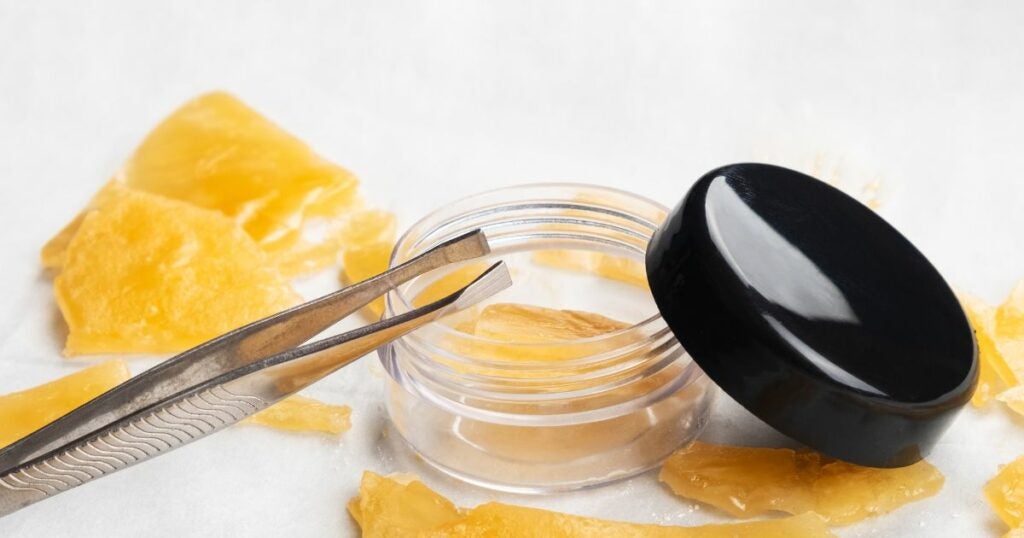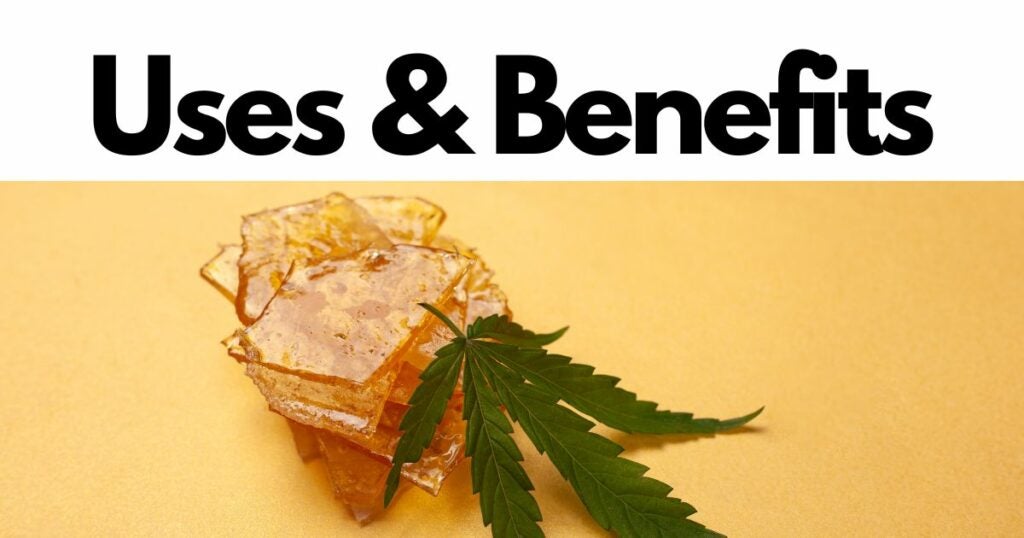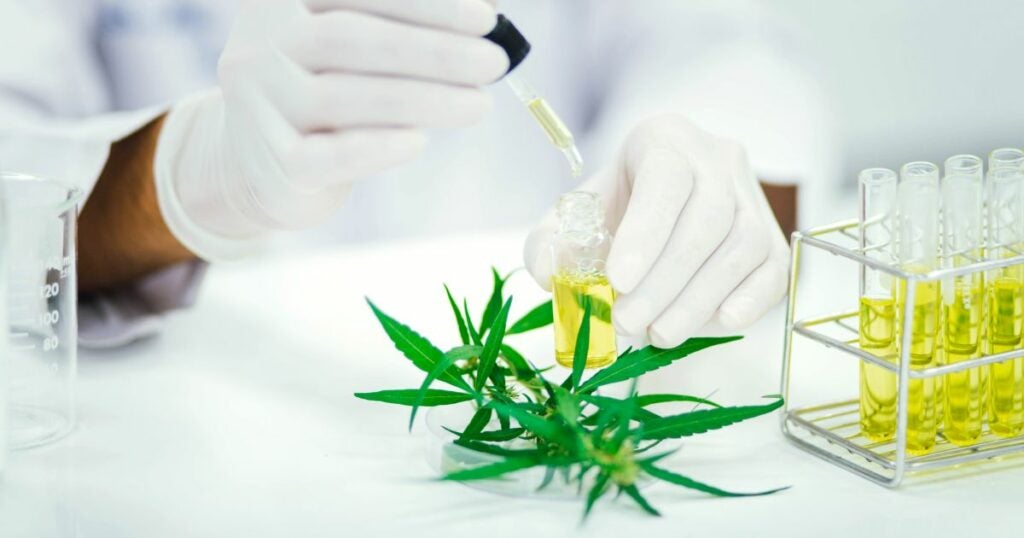Your cart is currently empty!
How to Make THC Distillate: Step-by-Step Instructions
How to make THC distillate? Get ready to unlock the secrets of crafting this potent cannabis extract with our step-by-step guide. We’ve got you covered from selecting the best buds to mastering the distillation process. Let’s dive into the world of THC distillate production!
Understanding THC Distillate

Defining THC Distillate
At its core, THC distillate is the purest form of THC available, a cannabinoid found in cannabis that’s primarily responsible for its psychoactive effects. Distillation is a process used to separate and purify compounds based on their boiling points, and when applied to THC, it results in a nearly pure and potent substance. The key here is the removal of all impurities, leaving only the magic molecule itself.
The Purity and Potency of Distillate
What sets THC distillate apart from other cannabis extracts is its incredible purity, often exceeding 90% THC content. This refinement is unmatched, making it the go-to choice for those seeking a clean and powerful high. Imagine enjoying the effects of cannabis without the overwhelming taste of plant matter or the need to consume large quantities.
Common Uses and Benefits

Now that we’ve grasped the essence of THC distillate let’s explore its versatile applications and benefits. While it’s most commonly associated with recreational use, its properties also make it a valuable asset in the medical field.
1. Recreational Use
For recreational users, THC distillate is like the fine wine of the cannabis world. Its high potency means you need less material to achieve your desired effect, making it an economical choice for those looking to stretch their stash. Whether you prefer vaping, dabbing, or mixing it into your favourite edibles, THC distillate offers a customizable and potent experience.
2. Medicinal Potential
Beyond recreational use, THC distillate holds significant promise in the realm of medicine. Research suggests that THC when isolated in its pure form, can be used to treat a variety of ailments. From pain management to anxiety relief and appetite stimulation, the potential applications are vast and intriguing.
3. Edible Infusions
If you’re a fan of cannabis-infused edibles, THC distillate can be a game-changer. Its neutral flavour and high potency make it ideal for creating homemade tinctures, candies, and baked goods. Gone are the days of struggling with the taste of traditional cannabis extracts in your recipes.
4. Topical Products
THC distillate can also be incorporated into topical products such as creams, balms, and salves. It may provide localized relief from conditions like muscle pain, inflammation, and skin disorders when applied to the skin.
5. Precision Dosing
One of the most significant advantages of THC distillate is its precise dosing capabilities. With other cannabis products, it can be challenging to gauge the exact amount of THC you’re consuming. Distillate allows you to measure your dose with unparalleled accuracy, ensuring a consistent experience every time.
Preparing Your Workspace
Before you embark on your THC distillate production journey, it’s crucial to set up a workspace that prioritizes safety and efficiency. Creating a controlled environment is the foundation for a successful distillation process. Here’s what you need to know:
Setting Up a Safe and Efficient Distillation Environment

- Ventilation: Ensure proper ventilation in your workspace. THC distillation can release potentially harmful fumes, so a well-ventilated area or a fume hood is essential.
- Fire Safety: Keep fire safety in mind. Distillation involves heat, so have fire extinguishers readily available and know how to use them. A fire-resistant workspace is also recommended.
- Cleanliness: Maintain a clean and organized workspace. This not only enhances efficiency but also reduces the risk of contamination.
- Lighting: Good lighting is crucial for precision. Make sure you have adequate lighting to observe the process.
- Workbench: Set up a sturdy workbench with enough space for your equipment and materials. A dedicated area for each step of the process can help prevent cross-contamination.
Equipment and Materials Needed
To distill THC successfully, you’ll need the following equipment and materials:
- Cannabis Material: Start with high-quality cannabis flowers or trim. The better the starting material, the purer your distillate will be.
- Extraction Equipment: Depending on your chosen extraction method (which we’ll cover later), you’ll need equipment such as a closed-loop extraction system, a rotary evaporator, and a vacuum pump.
- Solvents: If you use a solvent-based extraction method, you’ll need a suitable solvent, typically ethanol or butane.
- Safety Gear: Ensure personal safety by wearing protective gear like gloves, safety goggles, and lab coats.
- Distillation Apparatus: Invest in a short-path or wiped-film distillation system, which is essential for the actual distillation process.
- Heat Source: You’ll require a heat source, such as a heating mantle or hotplate, to apply controlled heat during distillation.
- Glassware: Various glassware, including flasks, condensers, and receiving vessels, will be necessary for the distillation setup.
- Thermometers and Gauges: Accurate temperature and pressure measurements are crucial for distillation. Invest in reliable thermometers and pressure gauges.
Safety Precautions for Working with Cannabis Extracts
- Stay Informed: Familiarize yourself with the laws and regulations regarding cannabis cultivation and extraction in your area. Comply with all legal requirements.
- Respiratory Protection: Wear a respirator to protect your lungs when handling solvents or working with potentially harmful fumes.
- No Open Flames: Avoid open flames or smoking in your workspace, which can lead to dangerous situations when working with flammable solvents.
- Proper Storage: Store solvents and chemicals safely in designated containers, away from heat sources and open flames.
- Emergency Plan: Have an emergency plan, including access to emergency services, should an accident occur.
- Training: Ensure that anyone assisting you in the distillation process is adequately trained in safety procedures.
With your workspace organized and safety measures in place, you’re ready to move on to the next crucial step: selecting the suitable cannabis material.
Starting with Quality Cannabis Material
Selecting the suitable cannabis material is the cornerstone of producing high-quality THC distillate. The quality of your starting material significantly influences the outcome of the distillation process.
Selecting the Right Cannabis Strains
Not all cannabis strains are created equal, and the strain you choose will impact the flavour, aroma, and effects of your final distillate. Here are some considerations when selecting cannabis strains:
- THC Content: Choose strains with a high THC content for potent distillate.
- Terpene Profile: Consider the terpene profile for flavor and aroma. Different strains offer various flavors, from fruity to earthy to citrusy.
- Cannabinoid Profile: Understand the cannabinoid profile, as it affects the overall experience. Some strains may have higher levels of other cannabinoids like CBD, which can influence the effects.
Quality Control and Testing
Before proceeding with extraction, it’s essential to perform quality control on your cannabis material. This involves:
- Visual Inspection: Check for mold, mildew, or contaminants. Only use clean, healthy cannabis material.
- Moisture Content: Ensure your cannabis is properly dried and cured. Excess moisture can lead to complications during extraction.
- Testing: Consider sending a sample for lab testing to determine cannabinoid and terpene profiles and check for any residual pesticides or contaminants. This information is valuable for tailoring your distillation process.
How the Starting Material Influences the Distillation Process
The quality of your starting material doesn’t just affect the flavor and potency of your final product; it can also impact the efficiency of the distillation process. High-quality cannabis with minimal contaminants and a known cannabinoid profile will lead to a smoother and more predictable distillation.
With your cannabis material selected and quality assured, you’re now ready to explore the various extraction methods used to obtain THC distillate. The extraction method you choose will play a significant role in the purity and efficiency of your distillation process. Let’s dive into the exciting world of extraction methods next.
Decarboxylation: Activating THC
Before we dive into the distillation process, it’s crucial to understand the vital step of decarboxylation and why it’s so essential in THC distillate production.
Understanding Decarboxylation and Its Importance
Decarboxylation is the process of removing a carboxyl group (COOH) from cannabinoids, a chemical reaction that activates THC and other cannabinoids. In raw cannabis, THC exists in its non-psychoactive acidic form known as THC-A (tetrahydrocannabinolic acid). To unlock the full psychoactive potential of THC, decarboxylation is necessary.
Decarbing Techniques for Maximizing THC Activation
There are several methods for decarboxylating cannabis, each with its own pros and cons:
- Oven Method: This is the most common method for home use. Simply grind your cannabis, spread it evenly on a baking sheet, and bake at around 240°F (115°C) for about 40 minutes. Be sure to monitor the temperature to avoid excessive heat, which can degrade THC.
- Sous Vide Method: A more precise approach involves vacuum-sealing ground cannabis and submerging it in a water bath at a controlled temperature, typically around 203°F (95°C). This method minimizes THC loss due to evaporation.
- Decarboxylation Machines: Specialized decarboxylation machines are available on the market, providing accurate temperature control and reducing the risk of over-decarbing or under-decarbing your cannabis.
Monitoring Temperature and Time
Whether you choose the oven, sous vide, or a specialized machine, temperature and time are critical factors. Heat activates THC, but too much heat or extended exposure can lead to the loss of terpenes and other valuable compounds. Monitor the temperature carefully and stick to recommended timeframes to ensure the most efficient decarboxylation without unnecessary degradation.
The Distillation Process
Now that your cannabis material is decarboxylated and activated, it’s time to embark on the distillation process itself. This is where the magic happens.
Step-by-Step Guide to Distillation
Distillation is a complex process that involves separating compounds based on their boiling points. Here’s a simplified step-by-step guide:
- Extraction: If you’re using a solvent-based method, extract THC from the cannabis material. Common solvents include ethanol and butane.
- Purification: Remove impurities from the extracted material through filtration and evaporation.
- Setup: Assemble your distillation apparatus, including the short-path or wiped-film distillation system, heating source, and glassware.
- Heating: Apply heat to the extracted material, causing it to vaporize. THC has a lower boiling point than many other compounds, allowing it to evaporate first.
- Fractional Distillation: THC vapor rises through the distillation column, where it condenses and is collected as a fraction. This process can be repeated to increase purity.
- Collecting Fractions: Collect the fractions of THC distillate as they condense, typically at specific temperature ranges. These fractions can be further refined for maximum purity.
Equipment Setup and Operation
Proper setup and operation of your distillation equipment are essential for success. Follow manufacturer guidelines for your specific equipment, ensure airtight connections, and maintain precise temperature control throughout the process.
Purity and Testing
Ensuring the purity of your THC distillate is paramount, both for safety and product quality. Here’s how to maintain the highest standards:
Laboratory Testing and Quality Control
Before your distillate is ready for consumption, consider sending a sample to a reputable laboratory for testing. This testing can confirm the cannabinoid content, identify any contaminants, and verify the absence of harmful residual solvents.
Meeting Safety and Legal Standards
Compliance with safety and legal standards is non-negotiable. Ensure that your THC distillate meets the legal requirements in your area, including potency limits and labeling regulations. Properly document your processes and maintain meticulous records to demonstrate adherence to these standards.
Storage and Handling
Now that you’ve successfully created THC distillate, it’s crucial to understand how to store and handle this precious product to maintain its quality and potency.
Proper Storage of THC Distillate
To preserve the potency and purity of your THC distillate, follow these storage guidelines:
- Cool and Dark: Store your distillate in a cool, dark place away from direct sunlight. Exposure to light and heat can degrade THC and other cannabinoids.
- Air-Tight Containers: Use air-tight containers, preferably made of glass or silicone, to prevent air and moisture from entering and affecting the distillate.
- Low Temperature: Keep the distillate at a low temperature, ideally in a refrigerator or freezer. Cold storage slows down degradation.
- Avoid Oxygen: Minimize exposure to oxygen. When transferring distillate between containers, ensure minimal air contact to prevent oxidation.
Preventing Degradation and Contamination
Maintaining the quality of your THC distillate is essential. To prevent degradation and contamination:
- Avoid Contact: When handling distillate, use clean utensils and avoid direct contact with your skin to prevent contamination.
- Check Seals: Regularly inspect container seals for any signs of damage or leakage.
- Separation: It’s normal for distillate to separate over time, with the more viscous components settling at the bottom. Gently mix or warm the distillate to recombine it.
- Labeling: Label your containers with the date of production to track freshness and potency.
Creative Uses for THC Distillate
Beyond smoking, THC distillate opens up a world of creative possibilities for cannabis enthusiasts and those seeking alternative consumption methods.
Innovative Applications Beyond Smoking
- Cooking: Incorporate THC distillate into your culinary adventures. It’s an excellent addition to recipes for infused oils, butter, and even baked goods. Precise dosing ensures a consistent and enjoyable experience.
- Topicals: Create your own cannabis-infused topicals by blending distillate with creams or balms. These topicals can offer localized relief from pain and inflammation without the psychoactive effects of smoking.
- Tinctures: Craft your own cannabis tinctures by mixing distillate with a suitable carrier liquid. Tinctures provide a discreet and convenient way to consume THC.
- Beverages: Experiment with THC-infused beverages, such as cocktails or mocktails. Remember to dose carefully, as the effects may be delayed compared to other consumption methods.
Exploring the Versatility of THC Distillate
The versatility of THC distillate extends to various creative applications:
- Customizable Experience: With precise dosing, you can tailor your experience to your preferences, whether it’s a subtle relaxation or a more intense journey.
- Discreet Consumption: Many of these methods offer discreet consumption, allowing you to enjoy the benefits of THC without drawing attention.
- Health and Wellness: THC distillate’s purity makes it an attractive option for those seeking therapeutic benefits without the smoke. It’s ideal for managing pain, anxiety, and sleep disorders.
Conclusion
In closing, as you venture into the captivating realm of THC distillate production, armed with the knowledge of safe practices, precise techniques, and creative applications, remember that this journey is a fusion of science and art. Embrace the power to customize your cannabis experience, explore innovative ways of consumption, and discover the therapeutic potential of this pure elixir. But, above all, approach this adventure responsibly, ensuring that legality and safety remain your guiding lights. Here’s to a future filled with enriched moments and elevated experiences in the world of THC distillate. Cheers to your successful distillation endeavors!
Frequently Asked Questions (FAQs)
How do you make distillate from buds?
To make distillate from cannabis buds, you’ll first need to extract the cannabinoids and terpenes. This is typically done through solvent-based extraction methods, such as butane or ethanol extraction. Once you have the extracted material, you can proceed to the distillation process to purify and concentrate the THC.
What are the ingredients in THC distillate?
THC distillate consists primarily of tetrahydrocannabinol (THC) and other cannabinoids like CBD, depending on the starting material. It should ideally contain no impurities, solvents, or additives, resulting in a pure and potent product.
How is distillate THC oil made?
Distillate THC oil is made through a multi-step process. It begins with extracting cannabinoids and terpenes from cannabis plant material using solvents. Then, the extracted material is purified and concentrated using distillation techniques, such as short-path or wiped-film distillation, to isolate and collect the THC as an oil.
What is the process of making distillate?
The process of making distillate involves several key steps: extraction of cannabinoids and terpenes from cannabis material, filtration and purification to remove impurities, and then fractional distillation to isolate and collect the desired compounds, typically THC. This process results in highly refined and potent distillate.
What are the 3 steps of distillation?
The distillation process typically consists of three main steps:
- Extraction: This step involves obtaining the desired compounds from the raw material, in this case, cannabinoids and terpenes from cannabis.
- Purification: After extraction, the material is purified to remove impurities, solvents, and undesirable compounds.
- Fractional Distillation: The purified material is then subjected to fractional distillation, where compounds are separated based on their boiling points, with the target compound, such as THC, collected as a fraction. This step results in the production of THC distillate.
In:
Leave a Reply
You must be logged in to post a comment.